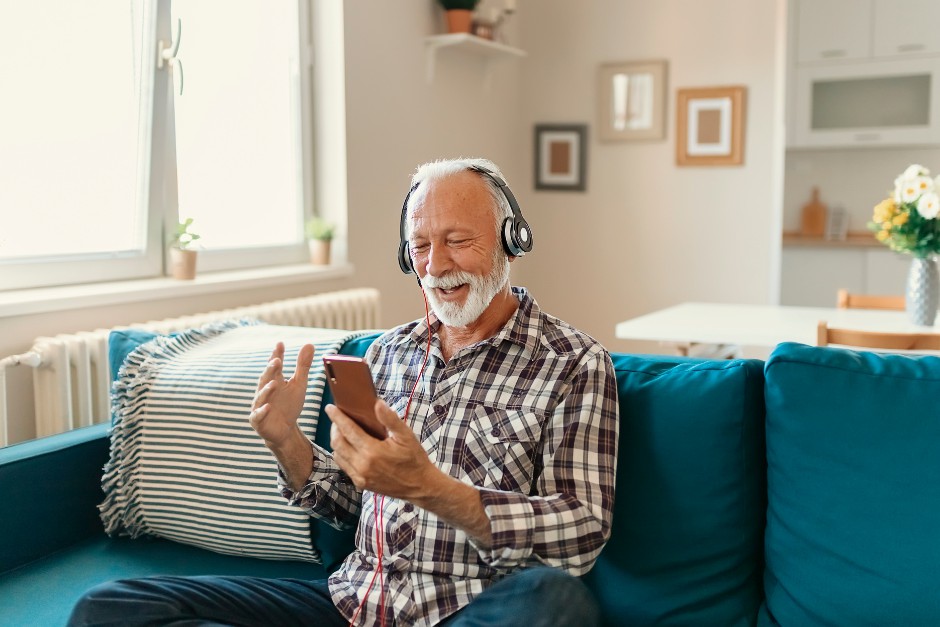What is entertainment? What positive impact can it bring to us? Recreation is equally important to people with low vision, and there are many recreational activities suitable for them waiting to be discovered. In this article, we’ll explore and summarize some activities that are suitable for people with low vision. Read on to see if there are any activities that interest you.
Low Vision People Entertainment Needs
People with low vision also need entertainment and this is no exception. Entertainment not only provides a place for happiness and relaxation, but also contributes to emotional well-being, helping to reduce stress and anxiety in daily life, and even depression. To some extent, people with low vision are more likely to meet these kinds of emotions while they’re facing the situation of vision loss.
At the same time, entertainment can also be a form of social interaction. Many recreational activities allow people to connect, which is also important for people with low vision to reduce their feelings of loneliness and maintain social connections. It’s also another way to relieve the stress of vision loss and somehow encourage those with low vision to be more confident in social relationships, and gradually regain the confidence in everyday lives.
 Entertainment also reflects and shapes culture, allowing visually impaired people to stay connected to social and cultural developments, whether following popular TV shows, music or literature, helping them stay engaged with the world. In other words, entertainment can be a means of learning and personal growth. For example, entertainment in the form of audiobooks, documentaries, podcasts, and educational videos can help people with low vision expand their knowledge and skills.
Entertainment also reflects and shapes culture, allowing visually impaired people to stay connected to social and cultural developments, whether following popular TV shows, music or literature, helping them stay engaged with the world. In other words, entertainment can be a means of learning and personal growth. For example, entertainment in the form of audiobooks, documentaries, podcasts, and educational videos can help people with low vision expand their knowledge and skills.
Additionally, there are individuals with low vision who may be artists, musicians, or performers, entertainment can be a source of inspiration and a way for appreciation of the work of others. To be more specific, this group of low vision particularly needs to get ideas by reading books, listening to music, visiting museums, watching movies or other ways. Their creations can be highly related to the cultural trend and emotional expression, which makes entertainment necessary for them.
Actually, the technology and entertainment industries are continually working to improve accessibility for people with low vision, by introducing features such as audio description, subtitles, screen readers, electronic magnifiers, and adaptive technology to make entertainment more inclusive for all. Most importantly, recreation is a way to improve the quality of life, providing people with low vision with opportunities for fun and enjoyment, allowing them to fully enjoy life. Therefore, people with poor vision, like everyone else, have a variety of emotional, social and cultural needs that entertainment can meet, while also helping to improve their well-being and quality of life.
To enrich the entertainment life of low vision people, assistive technology can provide sufficient help. Visual aids play a key role in a variety of entertainment fields, including film, theater, museums, literature, music, games, and virtual reality, enhancing accessibility and enjoyment for individuals with low vision. Whether through audio descriptions, large-print materials, tactile exhibits or assistive technology, these tools bridge vision differences and ensure that everyone can enjoy a rich entertainment experience.
Accessible Entertainment for Low Vision People
With the development of technology, there are several ways for visually impaired people to participate and enjoy various forms of entertainment. Here are some examples:
Digital readings
 Audiobooks and e-books give people who have visual impairments opportunities to enjoy reading. Audiobooks, available through platforms like Audible, provide individuals with low vision access to an extensive library of literature. Narrated by professional voice actors, audiobooks allow users to immerse themselves in stories without relying on printed text. Users usually can control playback speed and navigate chapters or sections easily. And e-books offer adjustable fonts, text sizes, and background colors, making reading more comfortable and accessible for those with low vision.
Audiobooks and e-books give people who have visual impairments opportunities to enjoy reading. Audiobooks, available through platforms like Audible, provide individuals with low vision access to an extensive library of literature. Narrated by professional voice actors, audiobooks allow users to immerse themselves in stories without relying on printed text. Users usually can control playback speed and navigate chapters or sections easily. And e-books offer adjustable fonts, text sizes, and background colors, making reading more comfortable and accessible for those with low vision.
On the other hand, for those with vision loss who prefer the traditional reading ways, electronic video magnifiers are able to help. This kind of device assists users in adjusting the magnification and color contrasts of the texts in the books. Meanwhile, when readers are feeling tired of reading with their residual vision, the text-to-speech function of the device can always help.
Audio Entertainment
 Audio entertainment can include ways of podcasts and music streaming, for instance. Podcasts cover a wide range of topics, from news and storytelling to interviews and education. Many podcast platforms include accessible features like episode transcripts and captions. Users can listen to podcasts on various devices, including smartphones, tablets, and computers. It’s one of the easiest ways to relax and obtain information about the world for visually impaired individuals.
Audio entertainment can include ways of podcasts and music streaming, for instance. Podcasts cover a wide range of topics, from news and storytelling to interviews and education. Many podcast platforms include accessible features like episode transcripts and captions. Users can listen to podcasts on various devices, including smartphones, tablets, and computers. It’s one of the easiest ways to relax and obtain information about the world for visually impaired individuals.
To speak of music streaming services, such as Spotify and Apple Music, offer extensive music libraries and accessibility options. Users can create playlists, explore music by genre, and enjoy features like curated playlists and radio stations. Moreover, these platforms often support voice commands for navigation. Music is a powerful healing force that promotes physical and mental well-being, which brings huge benefits to people with vision loss.
Enjoyable Cinema
Some special cinemas now are providing more and more assistance for people with poor vision to enjoy movies, such as audio descriptions. These narrations describe visual elements, scenes, and character actions, enhancing the cinematic experience for low vision people. Furthermore, to enjoy movies, concerts or theaters in a dim environment, low vision E-glasses like Acesight VR can help as well. It demonstrates super clear images on the high-resolution screens, and it’s truly easy to wear and operate for those with low vision.
Accessible Digital Platforms
 In order to improve the social connection of visually impaired people, the accessible digital platforms matter. Social media platforms like Facebook, Twitter, and Instagram have introduced accessibility features to enhance the user experience for individuals with low vision. These features include alt text for images, screen readers, and customizable text sizes and contrasts. Besides, some social media platforms support voice commands, allowing users to navigate, post, and interact using voice recognition technology. This makes it easier for people with vision loss to engage with social media content.
In order to improve the social connection of visually impaired people, the accessible digital platforms matter. Social media platforms like Facebook, Twitter, and Instagram have introduced accessibility features to enhance the user experience for individuals with low vision. These features include alt text for images, screen readers, and customizable text sizes and contrasts. Besides, some social media platforms support voice commands, allowing users to navigate, post, and interact using voice recognition technology. This makes it easier for people with vision loss to engage with social media content.
Tactile Art Exhibits
 Tactile exhibits are a special display method used in art and cultural exhibitions designed to provide an interactive experience for the visually impaired. These exhibits are often made from a variety of materials to simulate the texture, shape and structure of an artwork or cultural artifact. Audiences can touch and feel these exhibits to gain a deep understanding of artworks or cultural heritage, thereby achieving the purpose of cultural participation and appreciation. Tactile exhibits provide a unique way for people with visual impairments to more fully experience and understand various art forms and historical cultures in museums, art galleries and cultural venues.
Tactile exhibits are a special display method used in art and cultural exhibitions designed to provide an interactive experience for the visually impaired. These exhibits are often made from a variety of materials to simulate the texture, shape and structure of an artwork or cultural artifact. Audiences can touch and feel these exhibits to gain a deep understanding of artworks or cultural heritage, thereby achieving the purpose of cultural participation and appreciation. Tactile exhibits provide a unique way for people with visual impairments to more fully experience and understand various art forms and historical cultures in museums, art galleries and cultural venues.
The entertainment life is also crucial for people with low vision. Not only does it provide opportunities for fun and relaxation, but it also enhances social interaction, cultural engagement and mental health. With the continuous advancement of technology society, there are more forms of entertainment suitable for people with low vision that are being actively developed or waiting to be discovered. This ongoing effort will ensure that everyone can enjoy diverse entertainment experiences, regardless of visual impairment, creating a more inclusive and diverse entertainment world.

